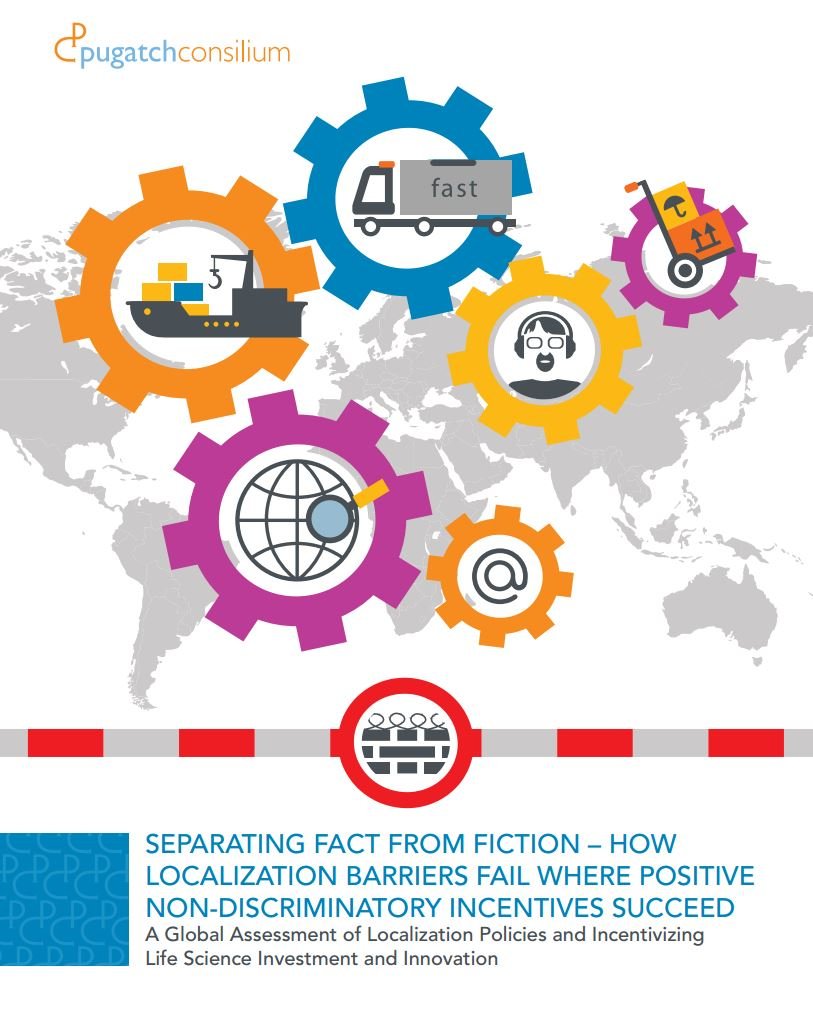Forced pharmaceutical localization fails to deliver
Country localization policies prove to be a barrier to incentives for introducing medicines into a market.

Forced pharmaceutical localization fails to deliver.
Country localization policies prove to be a barrier to incentives for introducing medicines into a market.

Forced pharmaceutical localization fails to deliver.
Conversations and healthy debate about issues facing our industry and the health care system are critical to addressing some of today’s challenges and opportunities. The Catalyst welcomes guest contributors, including patients, stakeholders, innovators and others, to share their perspectives and point of view. Views represented here may not be those of PhRMA, though they are no less key to a healthy dialogue on issues in health care today.
healthy debate about issues facing our industry and the health care system are critical to addressing some of today’s challenges and opportunities. The Catalyst welcomes guest contributors, including patients, stakeholders, innovators and others, to share their perspectives and point of view. Views represented here may not be those of PhRMA, though they are no less key to a healthy dialogue on issues in health care today.
We’re pleased to host a guest blog from Professor MP Pugatch, the IPKM Professor of Valorisation, Entrepreneurship and Management at the University of Maastricht and Managing Director of Pugatch Consilium, a boutique research consultancy.
Last week I had the pleasure of attending the 2016 BIO International Convention hosted in San Francisco, California. The biggest global event of its kind, this international convention brings together stakeholders from all across biotechnology, including from the biopharmaceutical sector. Going from panel to panel and meeting to meeting, I was struck by the number of times the topic of ‘localization’ came up.
While meaning different things in different countries, the term localization has essentially become a staple part of many countries’ industrial policies. Localization requirements tend to take a “top-down” approach, with a given government dictating, often in narrow terms, how and in what manner companies should invest in the country.
Companies seeking to enter the market are often put at a disadvantage if they do not opt to localize their operations in the prescribed manner. For example, the most extreme policies can lead to:
Critically, localization policies are on the rise.
Numerous financial and trad e bodies, including the European Central Bank and Global Trade Alert (an initiative housed by the Center for Economic Policy Research, a think tank), have documented a recent trend toward the increased use of trade barriers, particularly non-tariff or indirect tools, that have the goal of discriminating against imported goods and boosting local industrial sectors. Between 2008 and 2014, roughly 400 of documented trade-restricting actions were explicitly aimed at supporting national industries through, for instance, local content requirements and procurement policies favoring domestic companies and products (with local content and procurement-related measures among the fastest growing).
e bodies, including the European Central Bank and Global Trade Alert (an initiative housed by the Center for Economic Policy Research, a think tank), have documented a recent trend toward the increased use of trade barriers, particularly non-tariff or indirect tools, that have the goal of discriminating against imported goods and boosting local industrial sectors. Between 2008 and 2014, roughly 400 of documented trade-restricting actions were explicitly aimed at supporting national industries through, for instance, local content requirements and procurement policies favoring domestic companies and products (with local content and procurement-related measures among the fastest growing).
Part of my itinerary at the BIO Convention was to discuss these policies and in particular the research findings of a new study my firm and I have conducted with the support of PhRMA. Published last week, Separating Fact from Fiction – How Localization Barriers Fail Where Positive Non-discriminatory Incentives Succeed, the report is a global analysis of localization barriers and the impact they have.
Examining a range of countries that have raised localization barriers in an effort to boost domestic biopharmaceutical industrial capacity, manufacturing and R&D capabilities, the study finds that these policies have often failed to live up to their stated goals. Of particular note, countries with localization requirements tend not to see higher levels of domestic manufacturing, greater high-tech job creation or a positive effect on their balance of trade.
With regards to the biopharmaceutical sector, the clearest indication that localization barriers have not succeeded is the low level of clinical research (a proxy of high-level and sustained biopharmaceutical investment) in countries with such barriers in place. This, despite the fact that many of these countries exhibit some of the strongest biopharmaceutical market growth rates as well as significant market size and potential.
The paper finds that these negative results stand in stark contrast to the success of countries that focus on creating an enabling environment through positive, non-discriminatory incentives and policies. Indeed, countries such as Singapore, Denmark and Ireland, while small in market size, are found to have the most attractive policy and supportive environment with a strong long-term focus on positive incentives.
If there is one main take-away message from our study – as well as my many conversations at BIO – it is that the best way to localize innovation is not coercion, but to offer open and positive incentives.